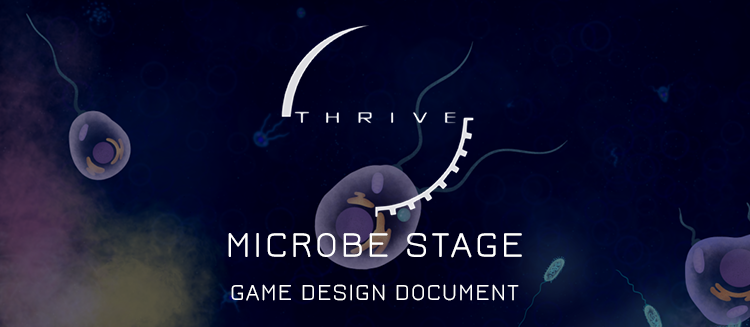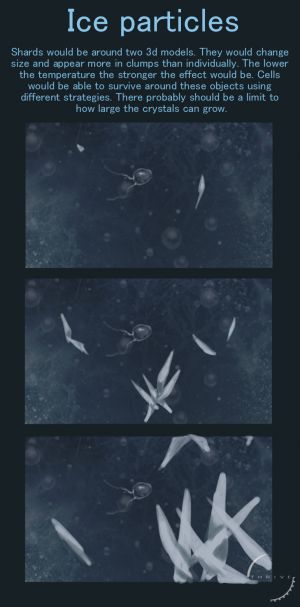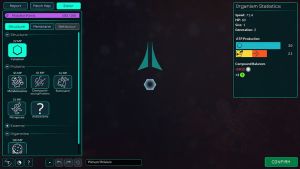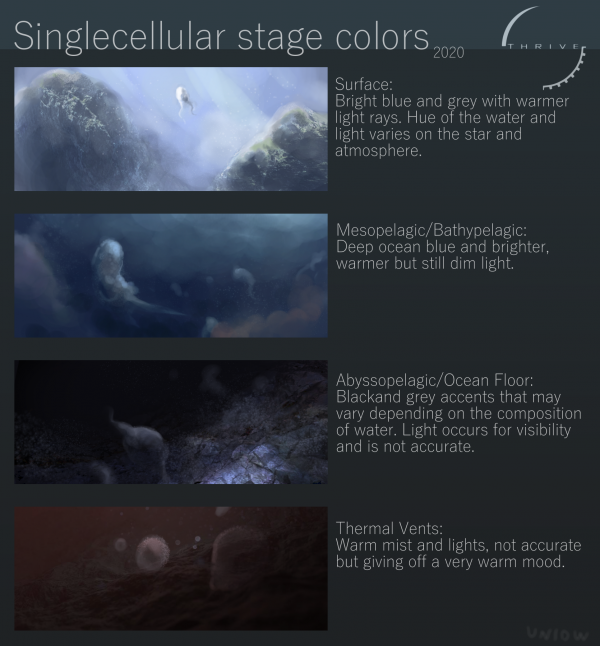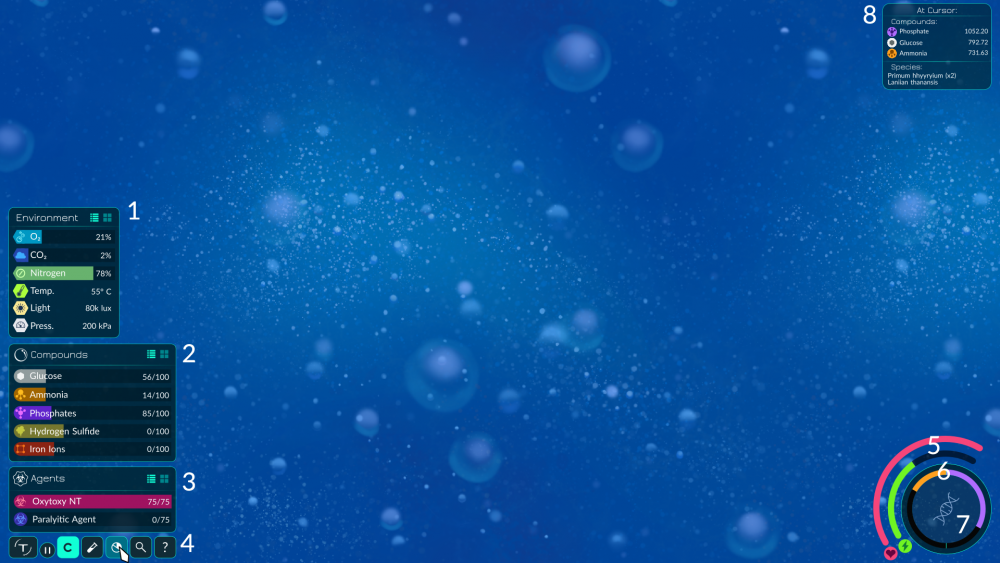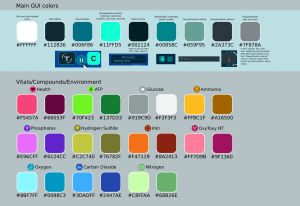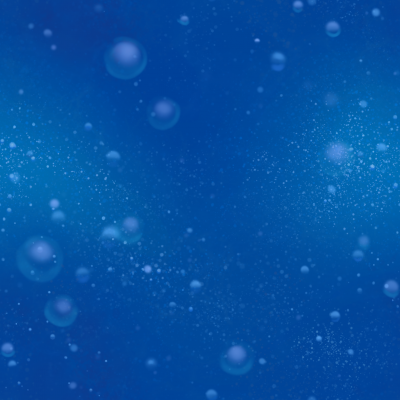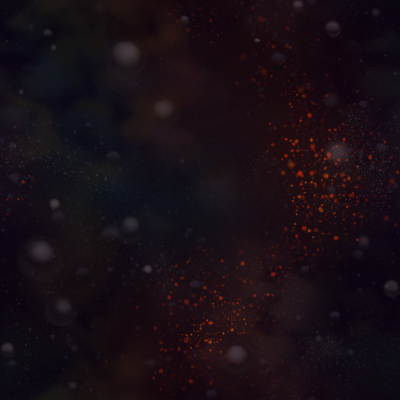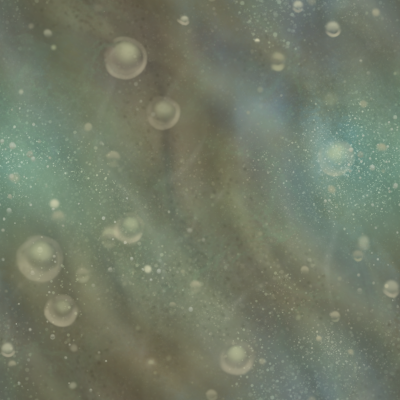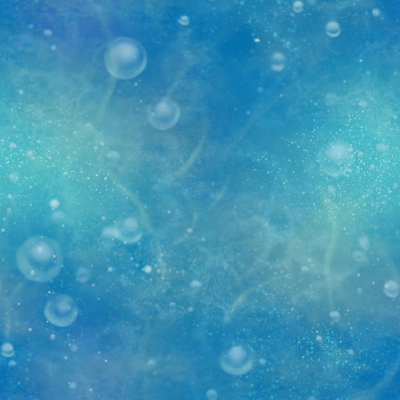Microbe Stage GDD
Previous stage: No earlier stages.
Next stage: Multicellular Stage
The Microbe Stage is the first stage of the game and is introduced to the player after a special cutscene that plays on game start; Showing the first cell, a simple sphere of cytoplasm within the chosen starting biome. You start off as a simple cell and must survive to collect enough nutrients to reproduce. Every time you reproduce, you can evolve your cell in the Microbe Editor. The stage ends when the player binds with a sufficient quantity of cells, and presses a newly revealed evolve button used to progress to the next stage. After that the player will take control of this cell, starting the game.
Overview
The Microbe Stage can be seen as having two types of gameplay: Environmental gameplay, and editor gameplay. Environmental is when the player is controlling their cell, hunting for nutrients, and competing to survive. Editor gameplay is when the player is in the editor, patch map and patch report designing their microbe to adapt to the competition and environment as well as letting their species migrate to other biomes.
Environmental gameplay is based on:
- Exploration
- Resource gathering
- Interaction with other microbes
- Surviving active threats experienced by an individual
Editor gameplay is based on:
- observing the conditions and population of neighboring patches
- Learning about environmental changes in the surrounding world
- Strategic evolution and adaptation of your species' physiology
- AI microbes that evolve simultaneously to your own species (Auto-Evo)
Transitions
Being the first stage, there is no transition into the Microbe Stage. In order to progress into the next stage, the player will need to evolve adhesion proteins, also known as binding agents, and successfully gather a sizable colony of cells. Once enough cells are collected in a colony, the player will be presented with the option to evolve into a multicellular organism, and thus moving on to the Multicellular Stage.
Environment
The environment is the gameplay space of the microbe and is comprised of abiotic (non-living) and biotic (living) components. Each environment the player resides in will be differentiated by unique terrain generation, chunk quantity and variety, compound availability and variety, and local species. The gameplay environment is viewed from a top-down perspective with all interactive elements being locked to the same Z-level plane. This simplifies movement and visual aspects to make the first stage of the game accessible for beginners and veterans alike, as well as granting the artistically thematic perspective of being viewed through a microscope.
Abiotic Environment Components:
Water currents: A fluid dynamics simulation will have streams of liquid (usually water) current constantly flowing through the environment and represented by particle effects. Currents will drag compound clouds, chunks, and even cells around the environment with the direction of flow. This feature creates a unique and engaging way to allow for more thoughtful and strategic movement throughout the environment, as well as provide a sense of life and motion to an otherwise still world. These might not be present in all biomes.
Compound clouds: Procedurally generated clouds of compounds (coded by colour) will appear in the environment. These are the primary source of sustenance and vital nutrients for early cells and autotrophic species, and need to be plentiful enough to reliably sustain these organisms. Each compound needs to remain as visually distinct as possible so as to maintain clarity and prevent confusion during gameplay. By representing essential compounds as collectible clouds, gameplay can be made more engaging than simply sitting around and passively absorbing nutrients from the surroundings. The abundance of these compounds can change over time based on the activities of species within the environment.
Gaseous Compounds: Not all compounds will occur in clouds. Less concentrated compounds such as CO2, N2, and O2 will exist as environment-wide conditions that can alter the speed of processes that require them. The abundance of these compounds can change over time based on the activities of species within the environment.
Terrain: Procedurally generated solid barriers that block movement, representing material formations underwater. Terrain is important for providing concrete substance to what would otherwise be an infinitely blank expanse of water, and forces players and AI alike to think about their positioning lest they get cornered by a predator. Terrain generation may vary drastically between biomes, from mazes of sandy substrate on the sea floor, to absolutely no terrain in the open sea.
Mineral Chunks: free-floating rocks and crystals such as iron, ice, salt, or even radioactive elements. Chunks can be pushed around by cells and currents, and can have a variety of effects depending on their composition. They can emit compounds, damage on contact, or simply look visually appealing. these chunks primarily exist to provide an interactable element to the environment.
Biotic Environment Components:
Microbes: Microbes are the primary actors of the microbe stage, ever-changing and evolving as time goes on. Microbes will constantly spawn into the game world in a radius around the player, even if the player is sitting still, to ensure that the environment is full of life. Spawned microbes are picked from a list of species inhabiting the simulated biome, with spawn chances being weighted by the total population at the time of entering the gameplay phase. The environment will initially start with a single species consisting of a single hex of cytoplasm, the player's species. Each time the player enters the editor, new species will arise from the player's own and each other using the auto-evo algorithm to simulate gradual evolution and the proliferation of life.
Cell chunks: Otherwise known as marine snow. Loose cell chunks will be generated in specific environments located near sufficient populations to simulate the death and decay of life. This creates a vital heterotrophic food source and niche for opportunistic or dedicated scavengers. The occurrence of marine snow in a patch is determined both by patch-type and population density of surrounding patches. Surface-level patches such as the epipelagic will have diminished marine snow even with high population compared to the mesopelagic for instance.
Environmental Conditions:
Sunlight: Measured in Lux. Sunlight is a variable condition that only occurs in surface-level environments. The level of lux in an environment rises and falls based off of the day/night cycle of the planet, and can also be potentially affected by weather. Light levels will only Effect species that rely on it for processes or senses.
Temperature: Measured in degrees of Celsius. Temperature is a variable condition that remains mostly constant throughout each given environment, but can differ greatly between different biomes. Temperature affects all microbes, and can even entirely prevent more complex species from living in an environment if they are ill-adapted to the range of temperature present. The larger and more complex a species is, the more sensitive to temperature difference they become, and the more it will cause their processes to lose efficiency in an environment.
Pressure: Measured in Bar. Pressure is a condition that remains constant throughout an environment, only differing between separate environments based on their depth/elevation. Pressure changes the impact of size on osmoregulation cost, meaning that cells will need to expend more energy to keep themselves stable in more extreme pressures.
Environment Layers:
Foreground: Will contain faint visual effects for aesthetics. Nothing in this layer will be directly interactable. May potentially be moved by currents.
Midground: Will contain the player and everything they can interact with.
Background: Will contain the parallax set of layers under the player for aesthetic purposes. Contains the background images, particle effects, etc. The background color will change depending on the patch properties, like light level and temperature. Some parts of terrain features might exist in the background to provide more visual depth to physical walls.
Patch Biomes
Main Article: Microbe Biomes
The Microbe stage contains a wide variety of environments split between multiple compartmentalized Biomes known as patches. Each unique patch has a biome type assigned to it which determines it's base characteristics such as compound availability and physical conditions. Each patch also contains it's own population of assorted species, which is limited by competition for available resources.
Each biome type should be unique from the rest; Whether from differing resources and conditions, or visually interesting features unique to the biome. This ensures that each patch has a meaningful difference from the next, and encourages adaptation for the player and AI alike.
Resource availability in each patch can be subject to change by the actions of the species that reside within them. Oxygenating species such as photosynthesizers will increase the prevalence of O2 within a patch, while aerobic metabolism in heterotrophic predator species can reduce O2 prevalence. The degree of impact species have on a given patch variable can differ between environments to ensure that compound availability does not reach extremes across the board. For instance, epipelagic patches will be more susceptible to changes in O2 than abyssopelagic patches.
Compounds
Compounds are the center of the game's resource management aspects. All microbes require a variety of compounds to survive and reproduce, with their exact needs differing depending on their metabolic pathways and size. The most essential goal during the gameplay phase of the stage is to seek out these essential compounds to maintain energy production and survive, and ultimately gather enough nutrients to reproduce. Compounds can be naturally located within the gameplay environment based upon patch conditions, taken from deceased cells, or otherwise synthesized from other compounds, or environmental conditions.
The availability of these compounds can be subject to change overtime based on the prevalence of species that make use of them.
There are four primary types of compounds in Thrive;
- Reproductive Compounds: These exist as an essential requirement for all life to reproduce. For sake of ease of gameplay, all cells will gradually gain reproductive progress on their own as time goes on, but collecting concentrated phosphate and ammonia compounds from the environment or other species allows cells to speed up their reproductive progress and growth.
- Energy Compounds: This refers to any compounds that are directly related to energy or energy storage such as ATP and glucose respectively. Some form of these compounds exists within all cells in Thrive, and is vital for remaining alive. These compounds typically cannot be found naturally, and must be synthesized from other compounds found in the environment, or otherwise taken from other cells. The only exception is naturally occurring glucose found at the beginning of the game, which will rapidly diminish as time goes on.
- Precursor Compounds: These primarily exist as raw resources that need to be processed into more useful compounds. Precursors can only be utilized by cells that have specialized processes for doing so, such as chemosynthesis, and thus require adaptation to such a lifestyle.
- Utility Compounds: Unlike previous examples, these compounds are not essential to survive, and are instead used as tools to interact with the environment and other cells. This includes toxins that cause harm to enemy cells, and slime which can be used as both propulsion and defense against predators. These compounds will not exist naturally, and are instead synthesized by the cells that use them.
For sake of accessibility, compounds in Thrive exist as simplified versions of that which exists in reality such as glucose acting as the representative of all sugars. Ideally, each compound needs an easily recognizable and memorable name, color, and purpose unique to itself. This ensures that players are not easily confused by potentially similar resources, and that said compounds remain visually distinct and identifiable within the environment.
Movement
Status: Largely Complete
- Because of the size of the organisms in this stage, they will be heavily affected by fluid dynamics.
- Pseudopodia (Ameboid movement) will be less effective in stronger currents, in which case movement organelles would be necessary.
- The player will have to navigate the currents and can use them to their advantage.
- The speed of the cell and the turning ability will depend on organelles and size.
- Heavier cells will be harder to move. Weight is determined by size, membrane type, and mass of each specific organelle.
- The cell will face the direction that your cursor is in, and move in the direction of pressed WASD keys.
- Cells will be able to momentarily boost their speed to escape danger or pursue prey at the cost of ATP strain.
Evolution
Status: Work in progress
- Organelles and proteins are internal machinery, like organs, which allow a cell to perform certain abilities. The player starts with only DNA and a membrane, but can acquire proteins and organelles as the game goes on. These parts are required for a cell to function properly and are crucial for survival.
- Organelles will slowly drift around their placement point in a cell for visual appeal.
- The membrane will distort based on the microbe's interactions with the environment (e.g. Engulfment and movement).
- A player can turn a part's function off from the process panel. A turned off part will either be darkened or dimmed in colour and feature reduced osmoregulation cost.
- The player will gradually be introduced to new parts as they play the game.
Mutations
- Microbes have a set of possible changes they can make each time they enter the editor. These are referred to as mutations. Some mutations are the placement or modification of internal cell parts, called organelles.
- Other mutations are the removal or relocation of a part within the cell.
- Mutations are also the alteration and development of the cell's membrane into different types or properties.
Part Unlocking
There are two primary forms of part unlocks.
New players will initially have access to only the most basic parts. Playing through the game will reveal new parts as they become relevant to the player's situation. This is intended to limit the amount of options initially available to the player in order to singificantly reduce the learning curve of the early game. This feature may potentially be optionally disabled by toggling the "new player mode" option before starting the game.
For eukaryotic parts, there is another unlocking system related to endosymbiosis, where membrane-bound organelles remain inaccessible until the player is able to engulf a suitable bacterium while possessing a nucleus. In the event that the player is unlucky, impatient, or otherwise impeded, they may also unlock the parts by expending a large sum of MP.
Part Customization
Parts can be customized via the "Modify" option within the editor context menu. This allow players to customize their organism to a greater degree by introducing selectable alterations that will modify the selected part's functionality by varying degrees. Modified parts will display an icon that allows the player to quickly distinguish upgraded parts from normal ones. Selectable upgrades will typically cost an amount of MP comparable to the cost of cytoplasm, while slider modifications will have a cost similar to the fluidity/rigidity slider of the membrane. This will provide players with a suitable place to spend any excess MP they might have. Removing or exchanging modifications will cost less than removing the part as a whole, so players cannot easily save MP by removing the entire part in most cases.
Multiple upgrades can be activated on a single part at once, as long as they do not conflict with each other. Conflicting upgrades will state what they conflict with, and will disable the conflicting upgrades should they be selected by the player.
There are two types of upgrades:
- Physical upgrades that allow players to adjust the size. length, or other physical properties of a part. These typically cost MP, are adjusted via a slider, and are only available to external organelles.
- Settings that modify a part's specifications such as changing target compounds with chemoreceptors.
Upgrades will typically alter the functionality of parts rather than replace them entirely. Upgrades that entirely change how a part functions should be avoided if possible, otherwise they shall act as a pathway or shortcut to unlocking entirely new parts for the player.
Combat
Combat's main purpose is to kill another microbe to obtain the compounds it holds. Three main forms of combat:
- Agents - Can damage or inhibit organelle/behavior based on customization. Can directly damage attacker as well.
- Predatory Pili - Pili rupture a cell's membrane, but can also act as agent secretors. Most cell walls are more resistant to pili.
- Engulfing - The traditional form of combat available to most cells. A microbe can usually engulf a microbe smaller than itself, provided it has an engulfing edge. Once ingested, a foreign microbe is digested inside overtime. Digesting cellulose or chitin cells requires the associated enzyme to perform. Cells cannot normally engulf if they possess a chitin or cellulose wall themselves.
There are also defenses against these dangers;
- Cell walls - These structures can be of different types (cellulose, chitin, silica...) depending on its type the wall will have a given resistance against either (or both) agents, engulfment, or pili. They can also increase the cell's health and decrease its movement speed.
- Special upgrades or organelles: Some parts or upgrades may grant a bonus resistance to sources of harm such as toxins.
Health and Death
Health is measured with HP, this will decrease when the cell runs out of ATP or when it's damaged. Whenever a cell looses HP it will flash in red. As the cell is damaged cracks will appear on it's surface. After some time without receiving damage it will slowly regenerate. If a microbe bursts, it is considered dead, there are multiple ways this can happen. If the cell runs out of ATP and can't produce more it cannot control osmosis and the cell dies by osmolysis (water explosion). Cells will initially swell to indicate this as a warning.
Osmoregulation
The cell membrane is assumed to be constantly undergoing osmoregulation passively (using pumps to balance water inside and outside of the cell). Osmoregulation is necessary for the cell to not fill with water, burst, and die. This means that the cell is constantly using a baseline of ATP to keep itself alive. This is why blank cytoplasm hexes still increase ATP consumption. When a cell runs out of ATP, osmoregulation will fail and the membrane will burst. This type of death is known as osmolysis. Highly upgraded cell walls can help prevent osmolysis by making osmoregulation less costly.
Engulfment
- A cell can die from being engulfed by a larger cell.
- A cell can use pili or agents from inside a cell to potentially escape.
- Chitin and cellulose walls can prevent a cell from being digested unless the predator is specially adapted.
Death
Upon death, a microbe will release its stored compounds and some of its organelles intact into the environment. Organelles require engulfment to be absorbed, unless an agent breaks them down first. External organelles and periphery organelles collapse immediately along with the membrane. Neither release any compounds into the environment.
If the player cell dies, the camera freezes in place for a few moments to show how they died, then fades to black. It then fades back in focused on a new cell of the player’s species in the same biome. This cell has low compound stores. If no members of the player’s species are available in the biome, the player is randomly assigned a new individual from another biome. If there are no other members of their species at all, they’ve gone extinct and lose the game. The player sees a brief game over screen explaining that their species has gone extinct, before being sent back to the title screen.
NPCs
Status: Work in progress
An NPC is any in-game entity which can think for itself. AI species evolve via Auto-Evo. This evolution takes place while the player is in the editor.
- Different modes of AI determined by various behavior scales.
- Surviving, seeking out necessary compounds and feeding on them.
- Killing other microbes (predator behavior scale), which involves using offensive capabilities.
- Fleeing from predators (prey-like behavior scale), which involves using defensive and mobile capabilities.
Prokaryotes
The player starts as a prokaryote or bacteria. They have access to a limited number of organelles called proteins, and can't use membrane enclosed ones. Their organelles consist of membrane proteins and peripheral organelles, like flagella. Prokaryotic parts are generally less efficient than eukaryotic equivalents, rendering it difficult for prokaryotes to match eukaryotes in size.
- Limited to proteins and some external parts.
- -50% size modifier compared to eukaryotes.
- Only capable of basic function and strategy.
Eukaryotes
Scientifically, a eukaryote is any cell which contains a nucleus. They have access to the more efficient membrane-enclosed organelles as well as more complex functions and traits.
- Can use all parts available, including the more efficient membrane-bound organelles.
- Can utilize complex behavior such as toggling internal processes, or using binding and signaling agents to interact with peers.
- +50% size modifier compared to prokaryotes.
- +50% damage resistance from all sources.
Interaction
- Microbes will compete with one another for resources.
- They can attack and kill one another or flee.
- They can also form co-operative colonies and assist each other.
Reproduction
Status: Implemented
- Only possible reproduction is asexual. Conjugation may be possible on new releases.
- Reproduction for microbes is a gradual and incremental process.
- A cell will slowly use its stored compounds to grow its organelles. It will grow only one organelle at a time.
- Once an organelle grows to double its normal size, it splits in half. The cell repeats this process until every organelle has split except the nucleus.
- When all organelles have doubled, the reproduction button pops onto the screen. Clicking the button will show an animation of the enlarged nucleus splitting, and then take the player to the Microbe Editor.
- After exiting the editor, the cell splits in two with each daughter getting one copy of the organelles. All other microbes of the player species in that biome will be changed to match the mutations.
Microbe Editor
Status: Work in progress Whenever the player reproduces, they will enter the Editor. The microbe stage editor is split into three separate sections for modifying different aspects of the player species. Changes in any of these sections deducts from the same pool of MP, so the player must carefully choose where to invest their points.
- Each editor session grants a limited number of Mutation Points (based on difficulty). 100 MP by default. Each possible change costs a certain number of MP.
- The player can add/edit/remove organelles in the microbe tab, change the membrane color and characteristics in the membrane tab, alter the behavior of their species in the behavior tab, and tweak individual parts via upgrades
- The player may view the performance of their species through the lens of autoevo through the prediction window.
- All of the species stats are displayed in the statistics window alongside their ATP balance.
- For more detail see Microbe Editor.
Symbiosis
- Technically, symbiosis refers to relationships between species that are either positive or negative, but for Thrive by symbiosis we mainly reference beneficial symbiosis.
- Symbiosis can develop naturally or artificially through binding agents.
- At first, colonies will be rare or nonexistent. Eventually, they will start to form using signal and binding agents. Colonies allow constituent cells to specialize. The game environment should be weighted towards incentivizing colonies near the end of the stage.
Colonies
- Only single-species colonies can form.
- It’s possible it may use a bitmask system similar to agent resistance.
- Cells can release a binding agent which will make them attach. They will stay attached until they choose to disband due to stimulus. Player colonies disband upon the player's command.
Emergent Symbiosis
- Cells may be able to work together to benefit each other.
Disasters
- Disasters can affect one or more biomes.
Mass Extinctions
- Rare even in high difficulty.
- Mass extinctions never happen concurrently with each other or natural disasters.
Other Disasters
- Asteroid Impact – All biomes become much darker (atmospheric dust), reducing light spots. One non-player biome is randomly chosen to have most of its inhabitants killed off.
- Snowball Earth – All biomes become much colder, reducing heat spots. Water currents also slow in many places. Ice appears as white floating shapes.
Natural Disasters
- Natural disasters are much less violent than extinction events, but are more frequent. They affect small numbers of biomes, often as little as one. Their effects plug into the CPA simulation just as extinctions would, but generally don’t have as big an effect.
Natural disasters never happen concurrently with each other or mass extinctions.
- Volcanic Eruption – Similar to an asteroid impact, but less widespread with less drastic effects. A few adjacent biomes become slightly darker and hotter.
- Earthquake – The player’s view shakes for ten seconds and water currents change direction in one biome.
- Virus – One species in a biome is chosen at random to be attacked by a virus. A virus may affect the function of one or more organelles, reducing their efficiency, sometimes heavily. If the player encounters or becomes an infected individual, the affected organelle will glow red and the entire microbe will have a slight red glow.
Game Screens
Main Article: Game Screens
What is displayed to the player in each section of the game and how to travel between them.
Progression
Main Article: Microbe Progression
The different abilities and mechanics available at different stages of the game, and how to win.
Simulation Specifics
Main Article: Game Features
The nitty-gritty of the game world and its simulated aspects. The different systems for simulating the microbe stage can be found in the main page linked above.
Visuals
The game’s overall visual style vaguely resembles a microscope image of cellular structures, but with slightly more vibrancy and colour. Generally, realism should be favoured unless such a design would be highly unintuitive (for example, real world cells are mostly transparent, but having the player use a fully transparent microbe in an environment filled with fully transparent microbes would make gameplay difficult). There should also be influences from less realistic science fiction aesthetics, especially in the design of the GUI.
Depending on the biome, the environment will have a given luminosity and colors, these are supposed to change on their own according to the planet's current state. For instance, if the atmosphere is covered in volcanic ash all biomes will have lower light levels and this would be reflected on the game environment as well, making everything look darker. Here are some general guidelines for how patches should look like:
General
Rules of thumb for asset design:
- Psuedo-randomness. Textures with organic order, e.g. Perlin Noise, Voronoi Textures and real-world organism texturing.
- Uniform sharpness. Texture should contain sharp/bold, medium sharpness or soft edges only. Try sharp edges first and blur to desired degree. Individual objects always have uniform focus, objects blurred depending on distance from camera like microscopic image.
- Light, desaturated colors. Matches real microbe pigmentation, i.e. mostly transparent.
- Realistic color types. Avoid purples, pinks or yellows (not found in nature). Focus on blues, greens, reds and pale oranges like this color palette (accented in white). Exceptions can be made where distinction is needed, e.g. a purple nucleus.
A palette is needed here
GUI
Main Article: Microbe Stage UI
This is a concept for the current UI. Its elements are:
- Environment panel. It shows the enviromental conditions of the patch or the place the player is in.
- Compound panel. Shows how much of each compound the player cell has.
- Agent panel. Shows how much of each agent the player cell has. All these panels can be compressed with the buttons on their upper right corner.
- Toolbar. Different tools available for the player, these are from left to right:
- Main menu
- Pause button
- Hide funcion. It hides the panels above
- Processes button. It will show the cell's metabolic proceses in real time.
- Stats button
- Search function. It will pause the game and let the player examine other species by clicking on them
- Help
- ATP and HP bars
- Reproduction progress bar. It shows how much amonia and phosphates the cell needs to reproduce. It becomes white when it's complete.
- Editor button. It glows once the reproduction bar is full and let's the player access the editor and patch map screens.
- Navigator panel. It shows which compounds and species are under the cursor.
- GUI should be minimal to immerse the player.
- Many elements should have toggle options to be shown on-screen or not, such as the compounds panel.
- Each button/panel should convey only a few pieces of information. Each button should be a separate image. Icons in line with Thrive's iconography style should be used wherever possible.
- Icons and text should be white with the exception of compound or other icons which are identifiable by virtue of their unique color and symbol.
- GUI animations should be quick and simple.
- When the pause menu or other overlay is active, a transparent grey rectangle appears over the game screen with active GUI elements above it.
Guide for making GUI elements
- Build a rectangle. Ends should be rounded, with both vertical and horizontal radiuses of 8.770 px.
- Color the shape #002124 with an alpha value of 192.
- Give the shape a stroke with 0.600 px width and color it #11ffd5.
- Hover variants are the same except the fill is #006f86 .
- Active variants are the same except the fill is #11ffd5, the same as the stroke. Plus their normally white icons are #112b36 now.
- The Jura font is used on heathers and panel names, while Lato is used on the text inside the panels.*
- Heathers are separated by divider strokes, these are lines with a radial gradient. The color is #112b36, it's opaque at the center and completely transparent at the extremes. The stroke width is 0.750 px.
Here are the svg files for the main and editor UI concepts.
It is recomended to use Inkscape to open these files and work on GUI assets, as other software like Adobe Illustrator has given problems in the past.
Models
There are two types of 3D models used in the game: static and procedurally generated.
Static
Static models have pre-defined shape throughout all situations, so can be created by modelers beforehand.
There are various static model needs:
- Organelles. All internal organelles will retain their shape while floating around inside microbes. For the nucleus, mitochondria, chloroplasts, etc. only a single model is needed for each. External organelles do change form, but in exact animations, discussed in the next section. Periphery organelles consist of a shader applied to the whole microbe, covering it in cilia for example.
Once organelle upgrading is implemented, models should be dynamic and change their shape to reflect these changes.
- Rocks. There is a set of premade rock models which would change their texture depending on the type of rock they are. Eventually these models should be generated procedurally.
Procedural
Procedural models are created and updated by the game on the fly based on environmental or player input. There are several rules for creating each, and pre-made visual elements can be used (such as patterning on a membrane), but the exact mechanics describing how each may be generated are explained in the simulation specifics section.
Like static models, procedural models come in many types:
- Membranes. Membranes are perhaps the most complex example of procedural generation within the game, relying on multiple factors. Initially, a microbe’s membrane is drawn based on its cytoskeletal hex structure, before becoming flexible and taking a more natural appearance. Cytoplasm area should be near enough the same between the hex arrangement and procedural shape, and should retain some aspects of what the player or Auto-Evo has decided a microbe is shaped like. Protruding lines of hexagons, for instance, need to remain about the same length and position. A further complication in drawing a membrane is that a microbe’s shape is defined in 2D, but the model needs to be rendered in 3D. Thickness should vary intuitively, i.e. thicker towards the center of a microbe and thinner at the edges, before curving over at the edges to an unseen underside. Membranes are overlaid with patterning and coloration, which also can’t distort too drastically. Environmental distortion also affects membranes. If a microbe pushes into another, its leading edge should squash. Similarly, the edges of a membrane may be affected by water currents, making streamlined organisms more effective. Of course membrane rigidity will change their appeareance, making them look less fluid and deform less.
- Surfaces. A surface is any inorganic object in the environment, such as rock or ice (the latter appearing during snowball Earth disaster events). All surfaces have the same uniform thickness, but their outer edges are generated procedurally. There are very few constraints on their form, but they shouldn’t exceed a certain size.
Animations
Most of the animations required for the microbe stage are for organelles. Though technically static models, they do exhibit dynamic behavior, but unlike the procedurally generated models, this behavior is pre-planned. The only difficulties arise when changing between different animations.
Movement organelles oscillate to drive cells forward through the environment. Flagella should either twist (like twirling springs) or wiggle (like a moving sine curve), animator’s choice. Cilia are similar, but much smaller, so will only change direction a couple of times along their length within one oscillation (unlike flagella, which do this multiple times). Lamellipodia should look and animate like a crowd of stumpy legs, changing their direction of oscillation depending on which way the microbe is travelling. The rate of oscillation for every organelle should scale with speed, becoming zero when not in use.
Other external and periphery organelles need simple animations. Pili should extend and retract organically but quickly, while agent secretors should compress slightly when secreting agents. All membrane animations are discussed in the previous section.
Internal organelles aren’t animated, other than their random floating around inside membranes. They may exhibit gradual changes of color depending on their rate of function or health level.
Backgrounds
For the microbe stage, the background will generally be the ocean itself. Depending on the biome and patch conditions (like temparature and light level), its visuals will change. Thus backgrouns will be procedurally generated. But since that's not possible at the moment different background textures are required.
All backgrounds must feature a tiling pattern with no discernible gaps between panels. The patterning itself needs to be complex but inconspicuous, and doesn’t necessarily need to look completely natural. Bubbles and particles can appear above the background, and will move to give the illusion of parallax. Everything should be at a microscopic scale, with the foreground appearing to be only slightly raised from the background.
As the player swims, the background should remain stationary (moving relative to the field of view), so it appears that the player is moving across the sea. A background must be sized so that its tiling isn’t clear, even when a player has zoomed out to the maximum extent.
Here are some background examples:
Midground
Between the foreground and background is the midground, which shows the paths of water currents and compound clouds. Water currents are distinguished by variances in water shading and lighting as well as particle effects, to give the impression of ripple or waves. The water is mostly transparent other than these tints.
The midground may also have a few organisms in it (as microbes don’t necessarily travel over a single plane), but the player and other foreground microbes will be unable to interact with them. All midground objects must be obscured by the water currents and heavily blurred to show this distinction.
Compound Clouds
Whenever a compound or agent spills into the environment, it produces a compound cloud. These are tied into the grid representation of compounds, where each point has an associated level of each compound. Higher concentrations have a more vibrant compound cloud of their associated color (e.g. glucose’s color is light gray, so compound clouds of oxygen are white). The only exception is water, which is transparent and doesn’t change visually whatever its density.
Compound clouds can mix, and billow following the path of water currents. Gradually they'll become less dense as they spread out, eventually becoming invisible after a certain point. When a microbe enters a compound cloud, it may collect the compound if it has enough storage or processing space. This reduces the concentration of that compound in the area the microbe has traveled over, lightening it slightly.
Due to some compounds being more common than others, the scale for how vibrant a compound cloud is should not be the same for all. It should require a higher concentration to achieve the same color intensity.
Agents are special case compounds. The color of each agent varies, but as of yet the exact coloration hasn’t been determined. To distinguish them from regular compound clouds, they would use particle clouds. There should be some visual cues involved – lure and signal type agents should appear positive (greens) while damaging agents should be negative (reds).
Audio
Main Article: Microbe Audio
What the game sounds like.
Miscellaneous
Main Article: Microbe Miscellaneous
Things not covered elsewhere.
Related threads
- GDD: http://thrivegame.canadaboard.net/t1257-microbe-stage-gdd?highlight=Microbe+stage
- UI: https://forum.revolutionarygamesstudio.com/t/microbe-gui/111
- Patch map: https://forum.revolutionarygamesstudio.com/t/patch-map-design-discussion/597
- http://thrivegame.canadaboard.net/t1049-microbe-stage-development?highlight=Microbe+stage
- http://thrivegame.canadaboard.net/t866-microbe-stage-progress-report?highlight=Microbe+stage
- http://thrivegame.canadaboard.net/t1428-microbe-release-planning?highlight=Microbe+stage
Appendices
There are some tables and other things collected in the Microbe Stage Appendices
